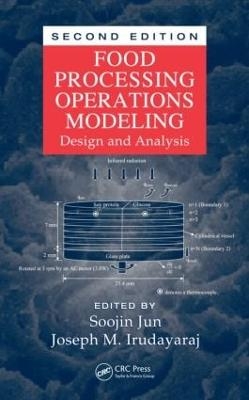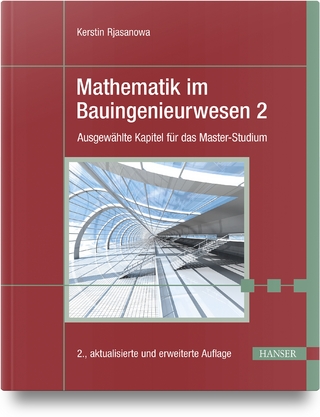
Food Processing Operations Modeling
Design and Analysis, Second Edition
Seiten
2008
|
2nd edition
Crc Press Inc (Verlag)
978-1-4200-5553-5 (ISBN)
Crc Press Inc (Verlag)
978-1-4200-5553-5 (ISBN)
Focuses on novel food processing technologies of interest relevant to food safety and quality as well as fresh commercialized computational fluid dynamics software to model complex food processing systems. This book offers information on infrared heating of biological materials as well as modeling electrical resistance heating of foods.
The food industry is on the verge of making some serious advances in the food processing sector. If successful, tomorrow’s consumers will have unhindered access to safe, nutritious, and high-quality products via novel food processing technologies. Food Processing Operations Modeling: Design and Analysis, Second Edition demonstrates how to effectively use numerical modeling to predict the effects of food processing on targeted components. This non-destructive testing method virtually eliminates the health risks of under-processed food and maintains high nutritional values that are often lost in overcooked food.
Using a task-oriented approach, this second edition discusses basic and advanced modeling tools that allow researchers to predict and prevent worse-case scenarios, perform comprehensive analyses, and optimize system design and efficiency.
Contains Selected Applications of Thermal and Non-Thermal Processing Operations
NEW TO THIS EDITION:
Six new chapters on radio frequency heating, high-pressure processing, pulsed electric field treatment, fouling model on heat exchangers, ozone treatment, and UV radiation
Expanded scope to address innovative and up-to-date food processing technologies
Numerous real-world case studies
Updated information on infrared heating of biological materials and modeling electrical resistance heating of foods
Electromagnetic treatments (RF, Infrared, and UV) and fundamentals relative to heat and mass transfer, fluid flow, and stochastic processes
Synergistic effect of combined food processing techniques and its numerical simulation
Food processing methods are constantly improving in an effort to maintain safe, high-quality, and fresh-tasting products. Providing the theoretical basis for these cutting-edge techniques, this tried-and-tested reference provides indispensable insight into food systems modeling, while exploring applications for further research.
The food industry is on the verge of making some serious advances in the food processing sector. If successful, tomorrow’s consumers will have unhindered access to safe, nutritious, and high-quality products via novel food processing technologies. Food Processing Operations Modeling: Design and Analysis, Second Edition demonstrates how to effectively use numerical modeling to predict the effects of food processing on targeted components. This non-destructive testing method virtually eliminates the health risks of under-processed food and maintains high nutritional values that are often lost in overcooked food.
Using a task-oriented approach, this second edition discusses basic and advanced modeling tools that allow researchers to predict and prevent worse-case scenarios, perform comprehensive analyses, and optimize system design and efficiency.
Contains Selected Applications of Thermal and Non-Thermal Processing Operations
NEW TO THIS EDITION:
Six new chapters on radio frequency heating, high-pressure processing, pulsed electric field treatment, fouling model on heat exchangers, ozone treatment, and UV radiation
Expanded scope to address innovative and up-to-date food processing technologies
Numerous real-world case studies
Updated information on infrared heating of biological materials and modeling electrical resistance heating of foods
Electromagnetic treatments (RF, Infrared, and UV) and fundamentals relative to heat and mass transfer, fluid flow, and stochastic processes
Synergistic effect of combined food processing techniques and its numerical simulation
Food processing methods are constantly improving in an effort to maintain safe, high-quality, and fresh-tasting products. Providing the theoretical basis for these cutting-edge techniques, this tried-and-tested reference provides indispensable insight into food systems modeling, while exploring applications for further research.
Soojin Jun, Joseph M. Irudayaraj
Introduction to Modeling and Numerical Simulation. Aseptic Processing of Liquid and Particulate Foods. Modeling Moisture Diffusion in Food Grains during Adsorption. Computer Simulation of Radio Frequency Heating. Infrared Radiation for Food Processing. Modeling of Ohmic Heating of Foods. Hydrostatic Pressure Processing of Foods. Pulsed Electric Field (PEF) Processing and Modeling. Fouling Models for Heat Exchangers. Ozone Treatment of Food Materials. UV Pasteurization of Food Materials. Stochastic Finite Element Analysis of Thermal Food Processes.
| Erscheint lt. Verlag | 27.11.2008 |
|---|---|
| Reihe/Serie | 500 Tips |
| Zusatzinfo | 40 Tables, black and white; 80 Illustrations, black and white |
| Verlagsort | Bosa Roca |
| Sprache | englisch |
| Maße | 156 x 234 mm |
| Gewicht | 635 g |
| Themenwelt | Mathematik / Informatik ► Mathematik ► Angewandte Mathematik |
| Technik ► Lebensmitteltechnologie | |
| ISBN-10 | 1-4200-5553-4 / 1420055534 |
| ISBN-13 | 978-1-4200-5553-5 / 9781420055535 |
| Zustand | Neuware |
| Haben Sie eine Frage zum Produkt? |
Mehr entdecken
aus dem Bereich
aus dem Bereich
Anwendungen und Theorie von Funktionen, Distributionen und Tensoren
Buch | Softcover (2023)
De Gruyter Oldenbourg (Verlag)
69,95 €
Buch | Hardcover (2024)
Hanser (Verlag)
39,99 €
Ausgewählte Kapitel für das Master-Studium
Buch | Hardcover (2024)
Carl Hanser (Verlag)
39,99 €


